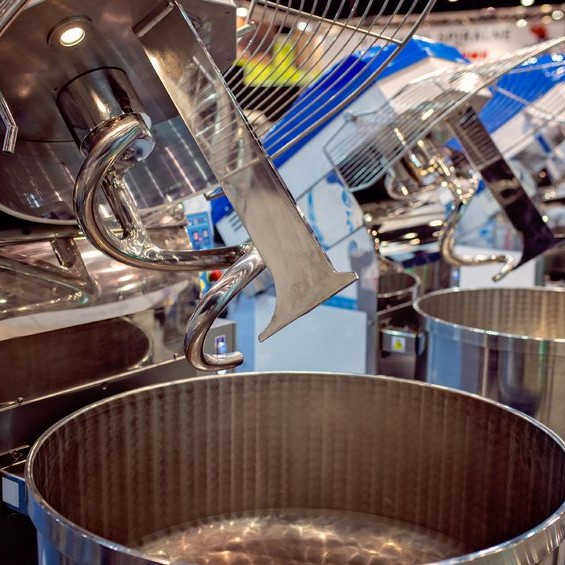
Metal-to-Metal Program
What is a metal-to-metal program?
Virtually all food processing equipment is made of metal, and must offer a durable service life (because it is often exposed to continual wear). A metal-to-metal program is needed to manage the inherent food contamination risk this equipment represents due to the risks of its moving and removable (ferrous, non-ferrous, and stainless steel) parts falling into the foods being processed.1
A metal-to-metal program is an essential part of a Physical Foreign Materials Program. It helps food processing facilities in several ways:
- Identifies metal sources of food contamination (focused on equipment/utensils) that could become physical hazards reasonably likely to occur
- Documents and implements a schedule for the inventory, inspection, replacement, and maintenance of all the moving and removable metal parts of equipment and utensils
- Establishes prevention mechanisms against food physical contamination
- Documents and implements procedures in case of metal-to-metal incidents that directly affect food safety
Regulatory compliance2
Extraneous/foreign metal materials are thoroughly addressed in 21 CFR Part 117 (Current Good Manufacturing Practice, Hazard Analysis, and Risk-based Preventive Controls for Human Food):
- Adequate precautions should be taken to reduce the potential for contamination of food, food-contact surfaces, or food-packaging materials with extraneous materials.
- Adequate measures must be taken to protect against the inclusion of metal or other extraneous material in food.
- Equipment and utensils must be designed, constructed, and used appropriately to avoid the adulteration of food with lubricants, fuel, metal fragments, contaminated water, or any other contaminants.
- Facilities must conduct a hazard analysis to identify and evaluate which metal materials represent a physical hazard and hence require preventive controls.
The hazard analysis must include: (i) Hazards that occur naturally in the foods; (ii) Hazards that may be unintentionally introduced; or (iii) Hazards that may be intentionally introduced.
Relevance
It is important for bakeries to document and implement a metal-to-metal program due to their unique process characteristics. The production line of a bakery is often a combination of automated, mechanized, and manual handling of the products. The following are a few examples of such processes:
- Unpacking, weighing, and formulation of macros and minors
- Pneumatic conveying of particulate products (e.g., wheat flour, dry minors)
- Charging/unloading of WIP into/from mixing units
- Mixing of dry and wet ingredients in mixers (not always in closed bowls)
- Conveying of dough/batter in bulk from spirals to dividing/molding stage
All these cases require a tight labor-machine interaction, thereby increasing the likelihood of physical contamination of foods with foreign metal parts. Special attention must be paid to disassemblable parts of mixers, such as beaters, paddles (flat blades), wire whips, pastry blenders, dough arms (hooks), and spirals. Excessive wear and heavy duty can cause metal fragments/parts to become detached and fall into products, causing contamination.
Strategies that bakeries use for the prevention of food contamination by foreign metal bodies include:
- Metal detectors
- X-rays
- Vision systems
It must be remembered that none of these devices are capable of detecting all foreign-body contaminants. The following factors must be taken into account:
- Particle size of metal body
- Calibration of equipment
- Sensitivity of equipment (limit of detection)
- Synchronization between reject mechanism and detector
- Speed of conveying band
Other preventive controls include screens/sieves and magnets placed in pneumatic conveying lines of dry ingredients, e.g., wheat flour.
Components of a metal-to-metal program
The facility must conduct the following procedures as appropriate to ensure that no foreign materials in foods reach the market:
- Classification, inventory, inspection, maintenance, and replacement of equipment parts that could represent a physical hazard to products
- Risk assessment of metal materials (considering their severity, occurrence, and detectability) for the identification and control of physical hazards following the “how the product is made” approach)
- Handling of incidents related to foreign metal bodies in food
- Visual inspection of products
- Routine testing and checking of detection/rejection systems and filters
- Calibration of detection/rejection systems
- Specifications regarding the sensitivity of detection/rejection systems depending on the chemical composition of metal material
- Specifications regarding the appropriate mesh/sieve size of filter mechanisms
- Corrective actions in case of nonconformities due to food product contamination by metal fragments/bodies
- Education and training of staff
- Audit of metal-to-metal program
References
- AIB International. “Tip of the Week: Keeping Foreign Material Out of Consumer Products.” 2016, http://aibdev.technologyally.info/Food-First-Blog/PostId/244/tip-of-the-week-keeping-foreign-material-out-of-consumer-products.
- U.S. Food and Drug Administration. “21 CFR 117 – Current Good Manufacturing Practice, Hazard Analysis, and Risk–based Preventive Controls for Human Food.” 1 Apr. 2017, https://www.accessdata.fda.gov/scripts/cdrh/cfdocs/cfcfr/CFRSearch.cfm?fr=117.130

